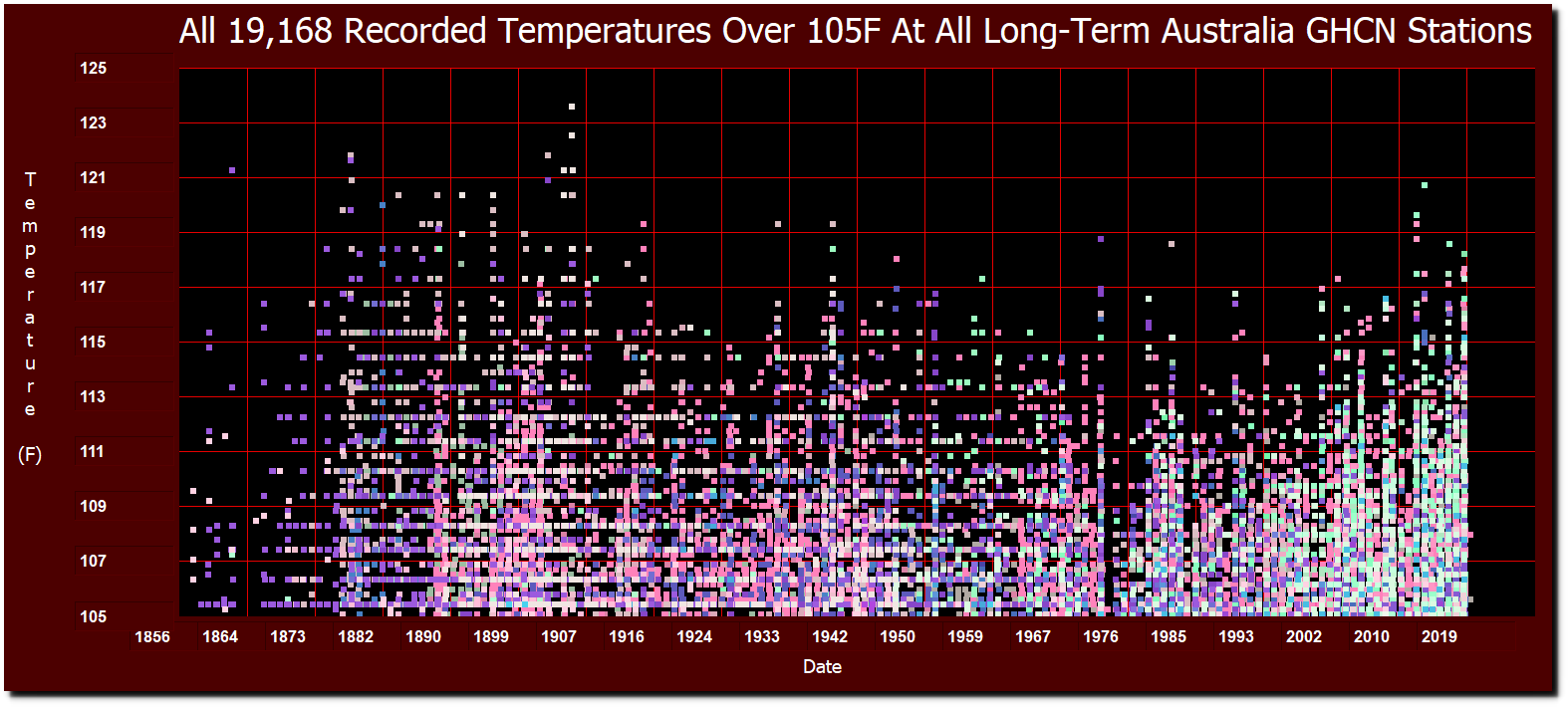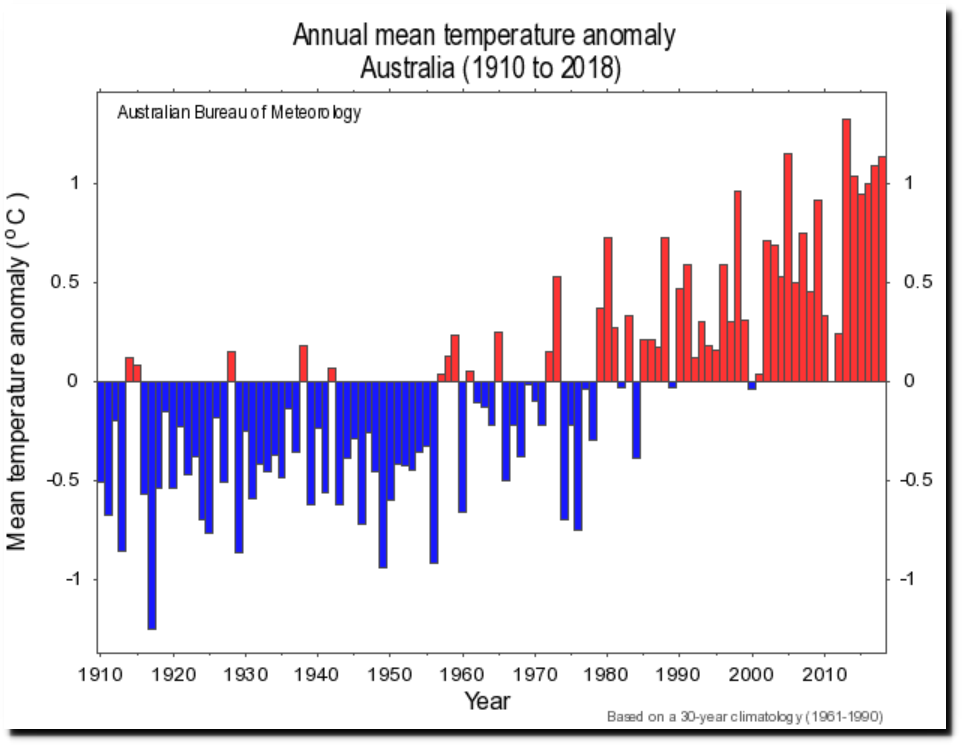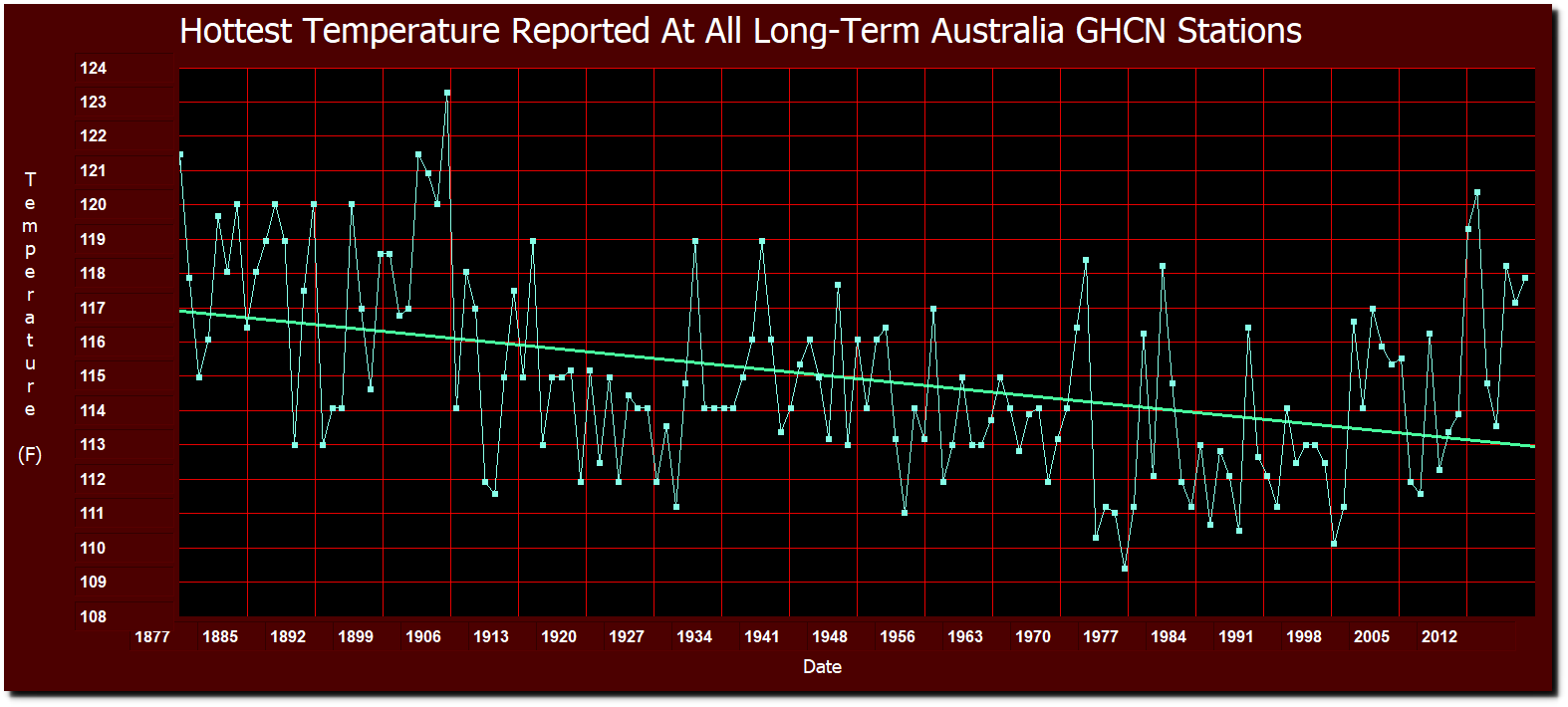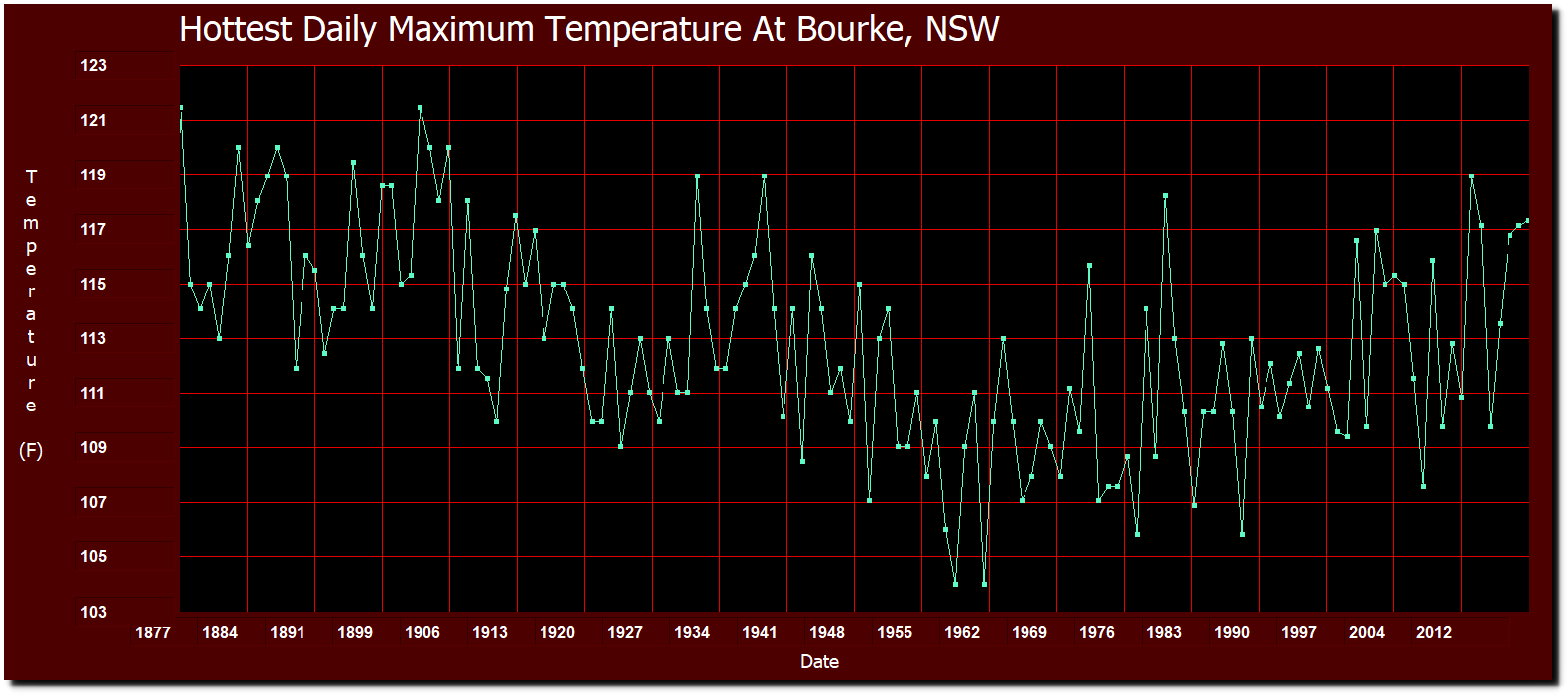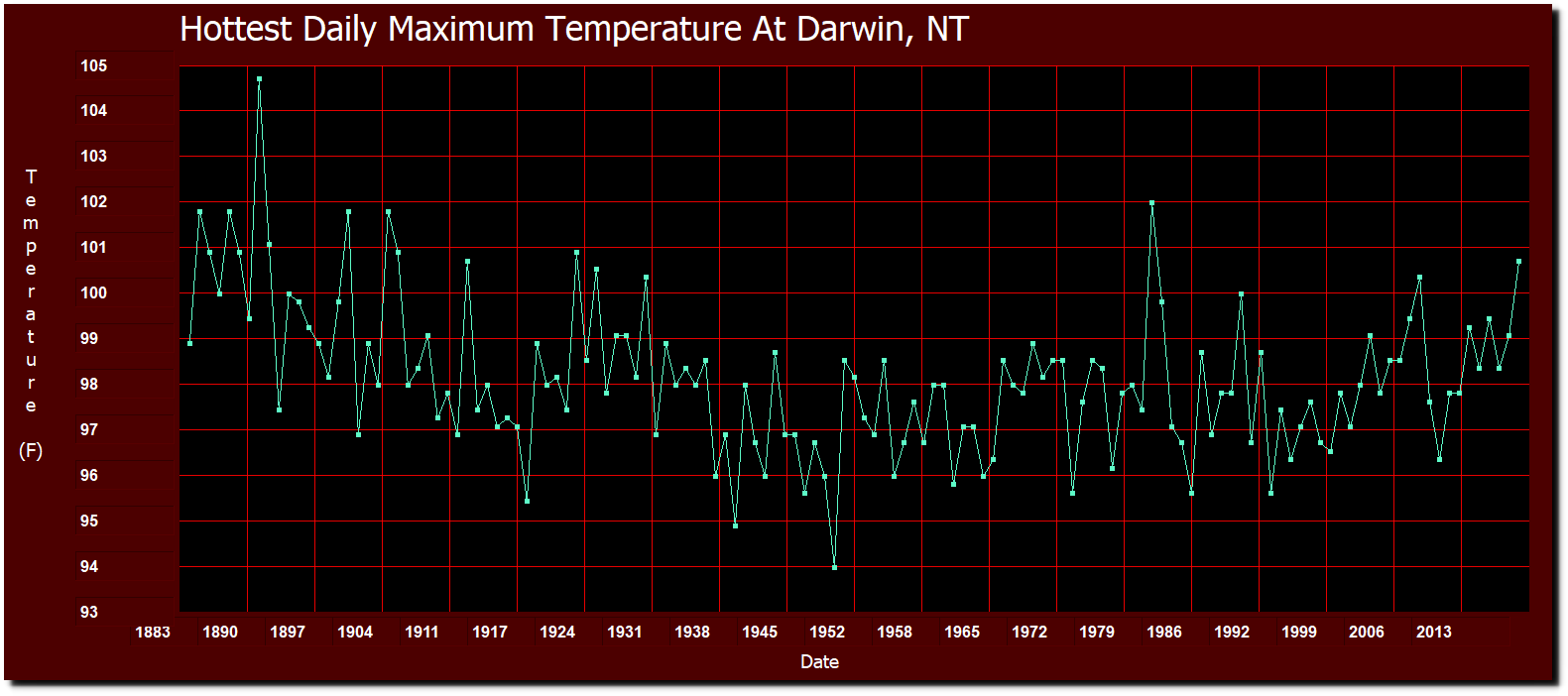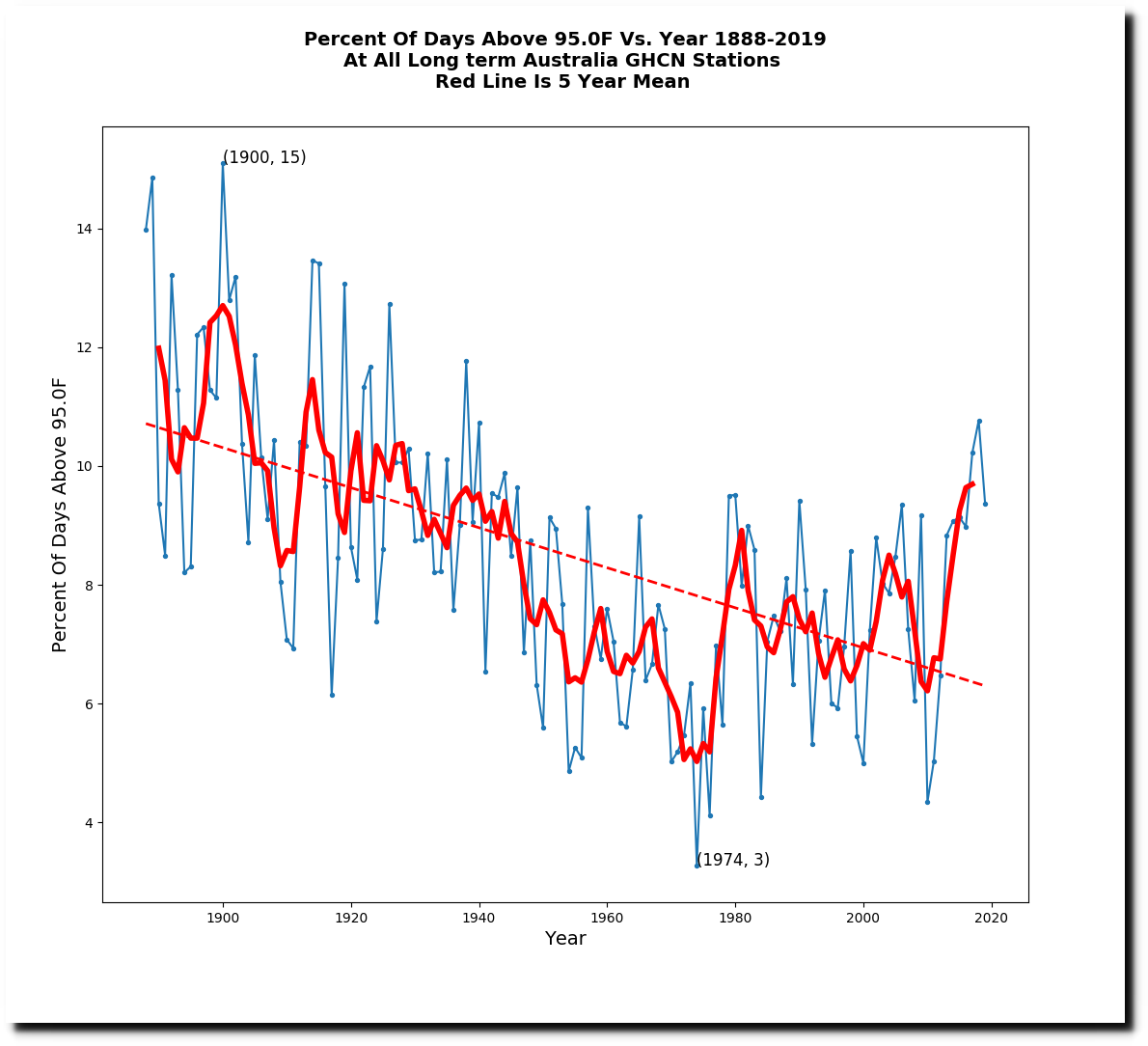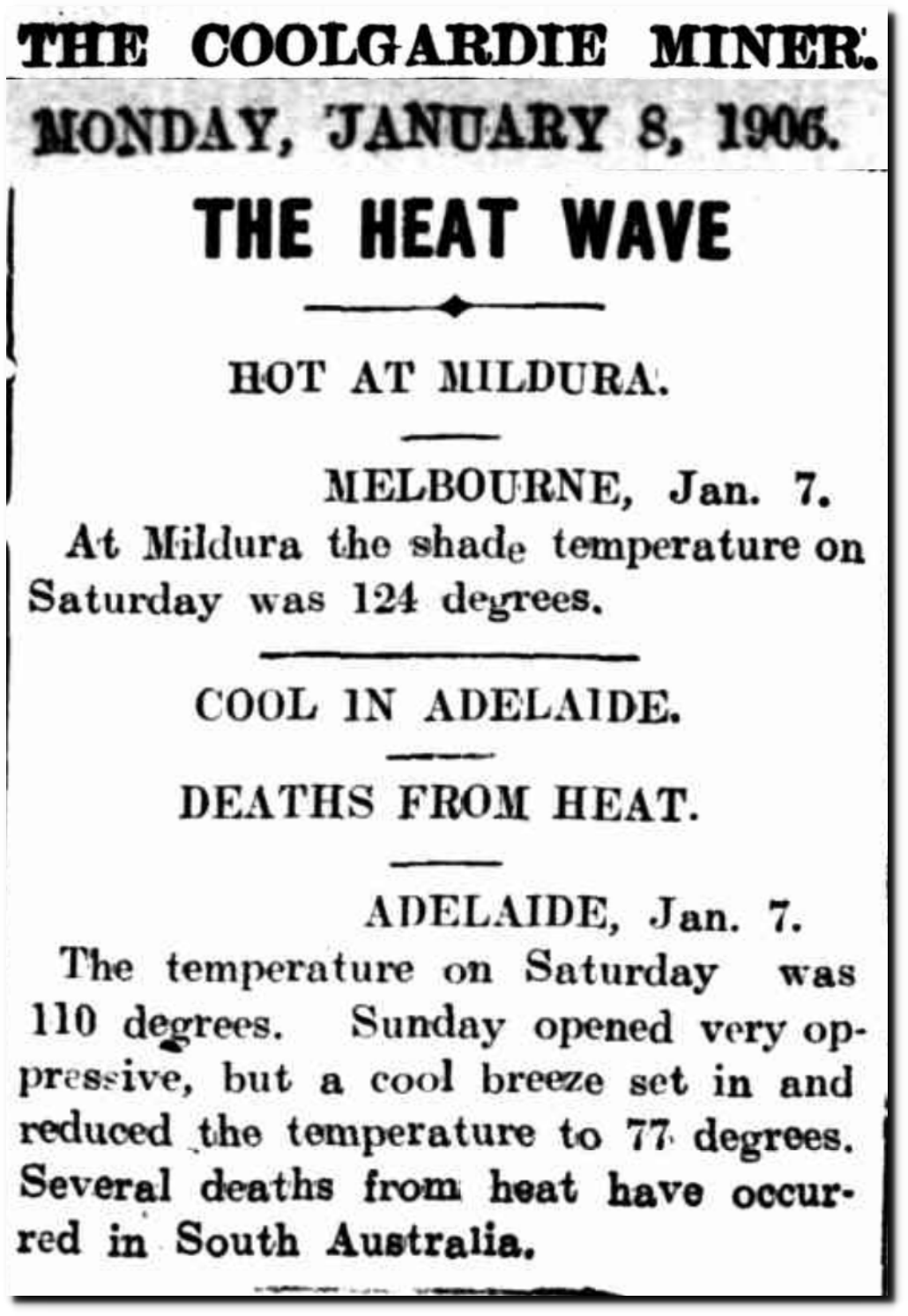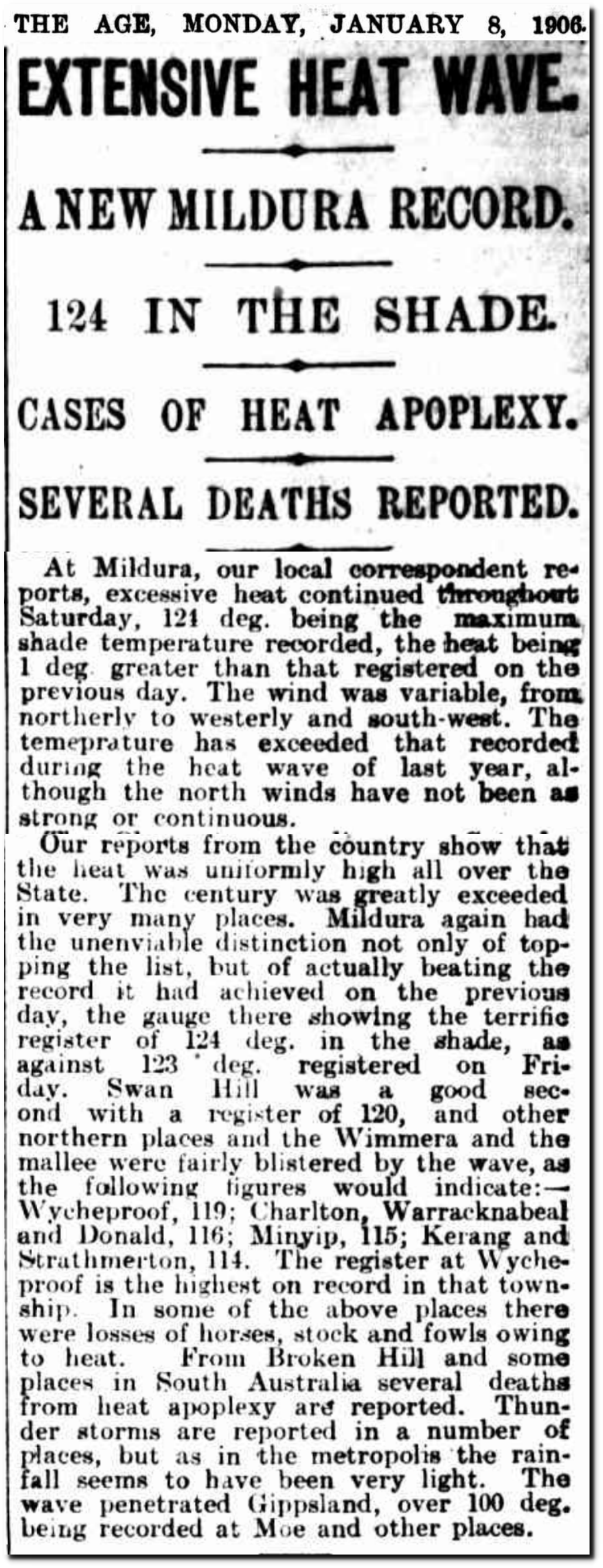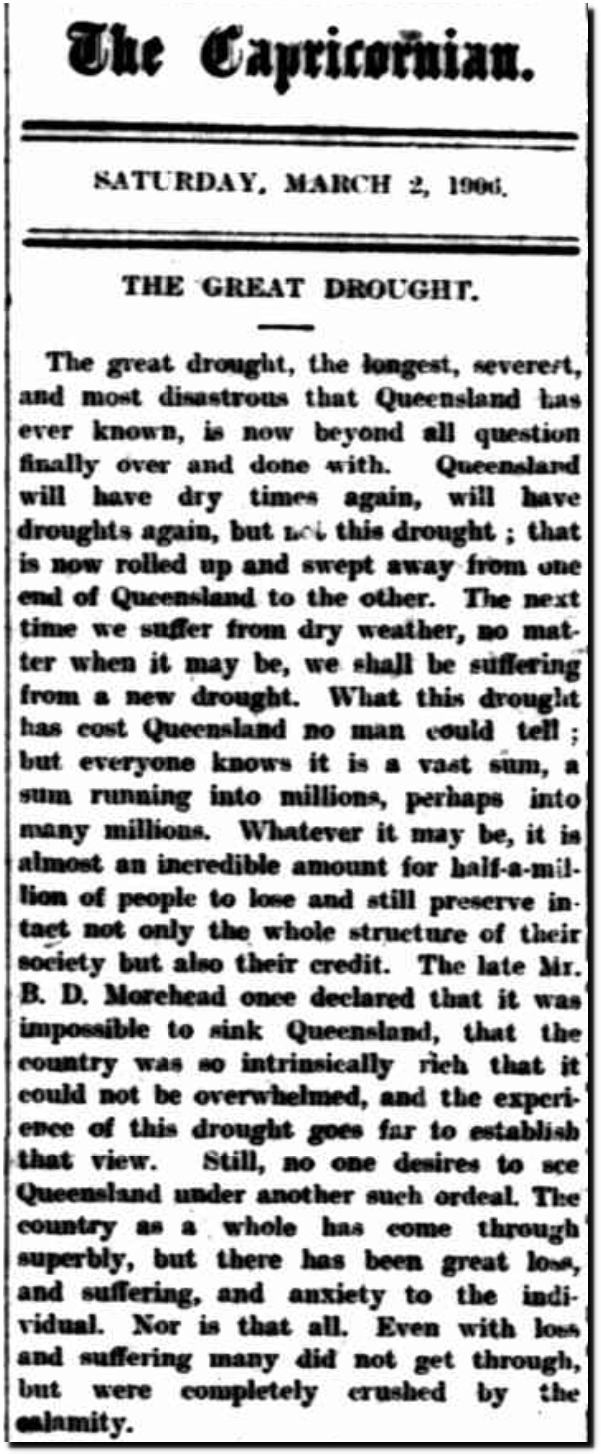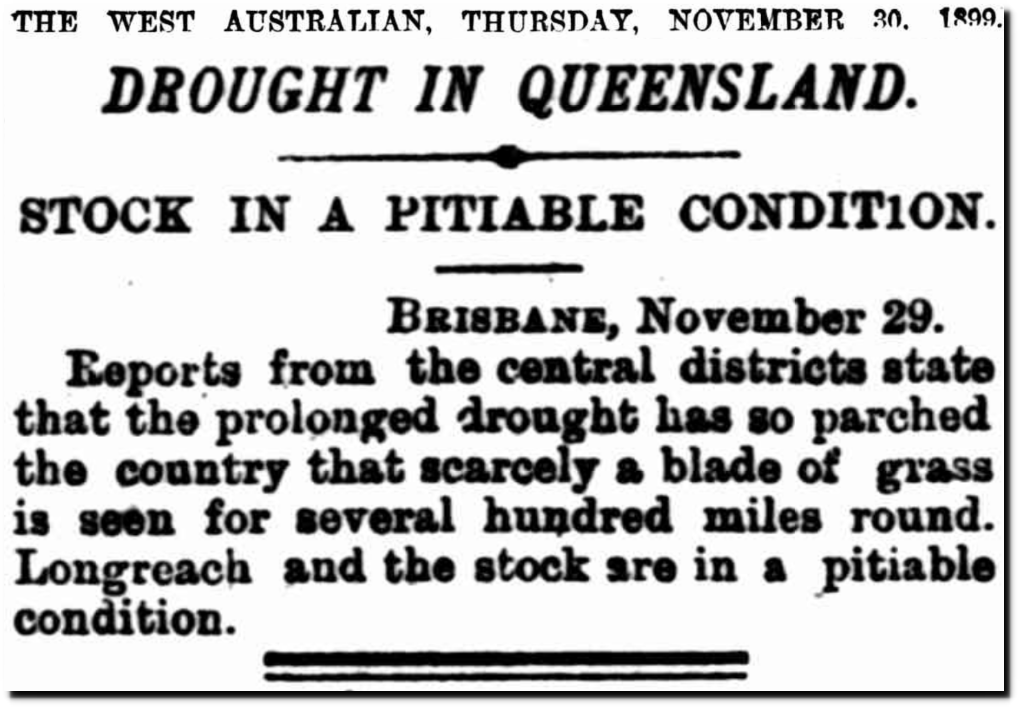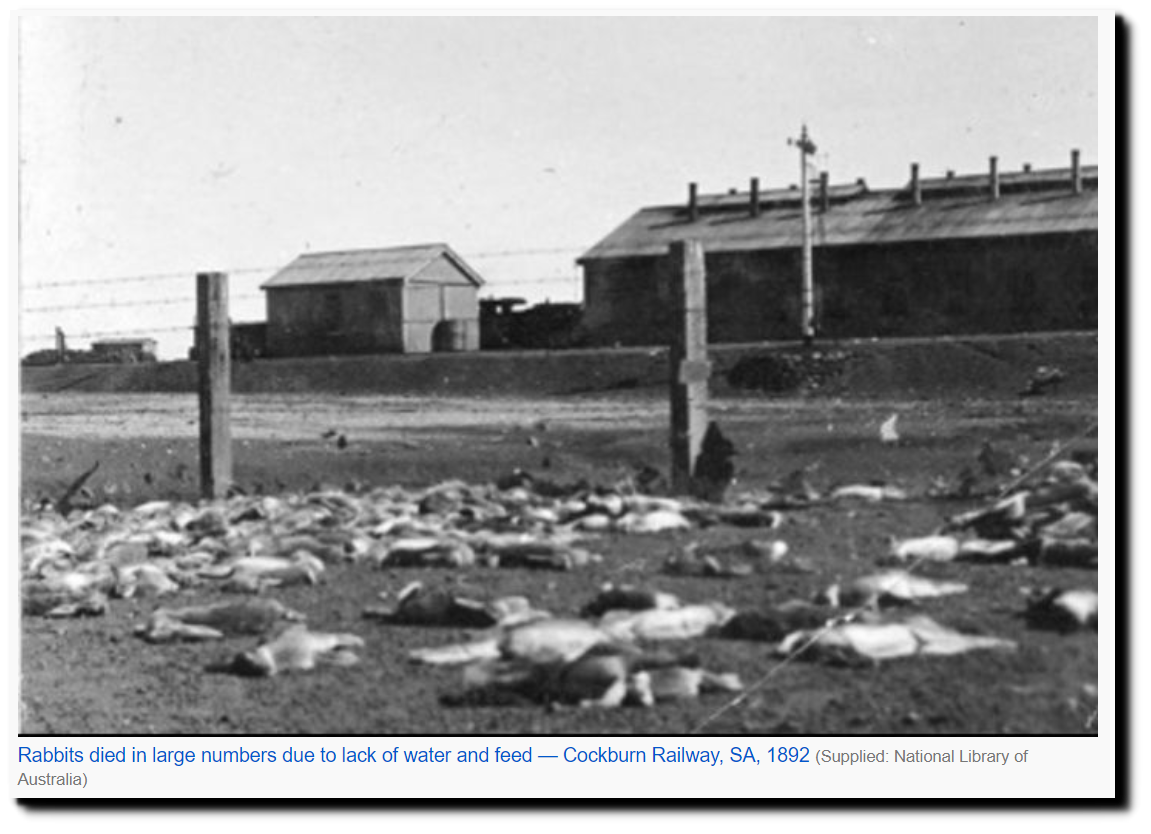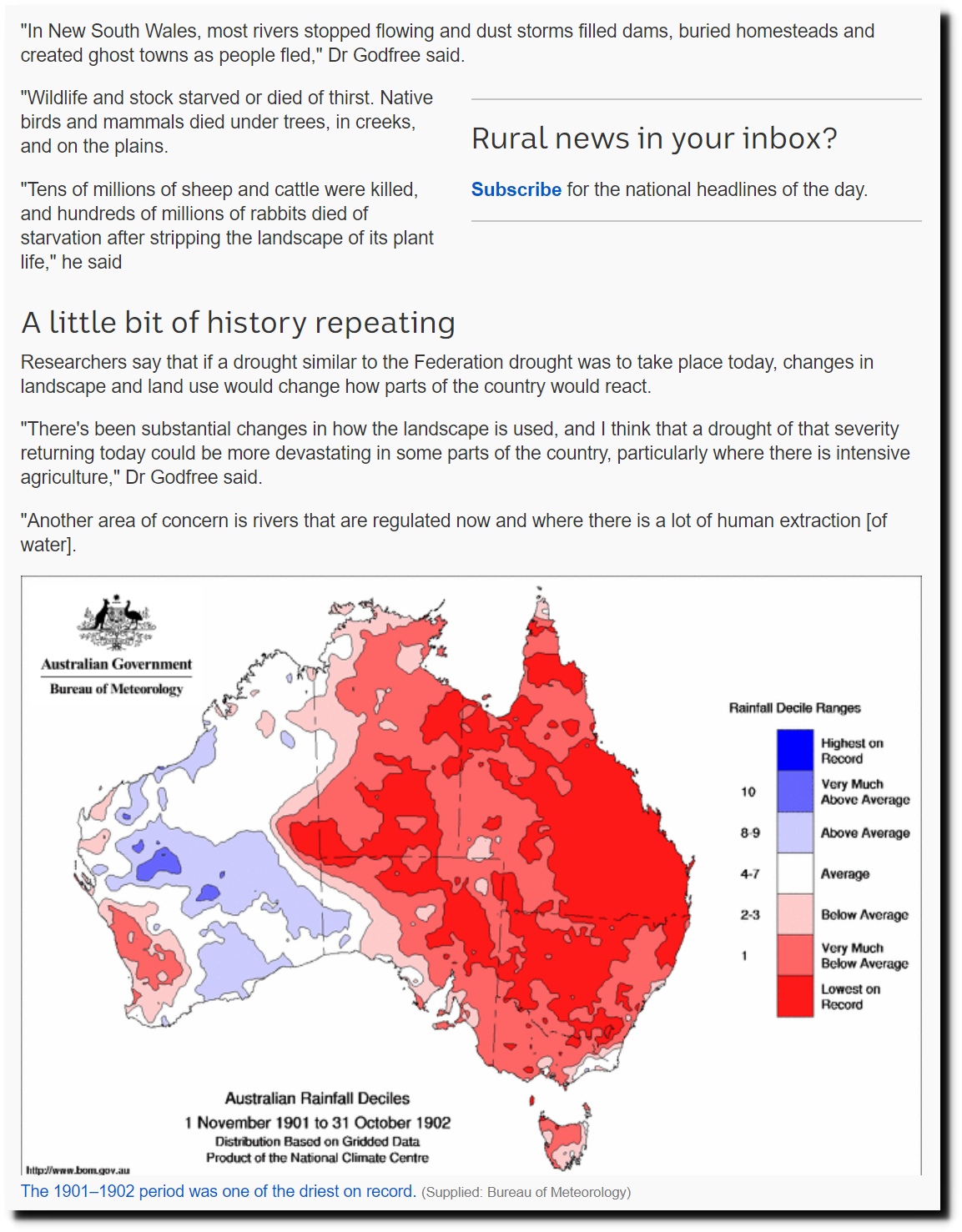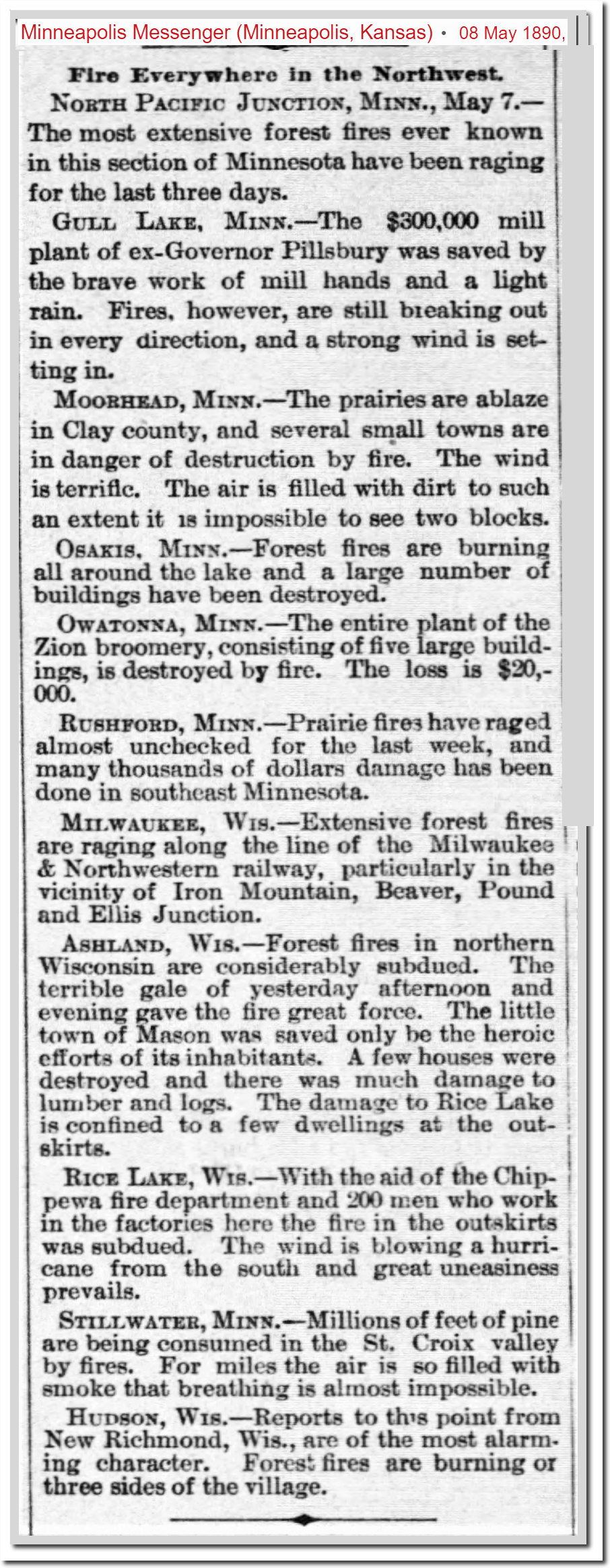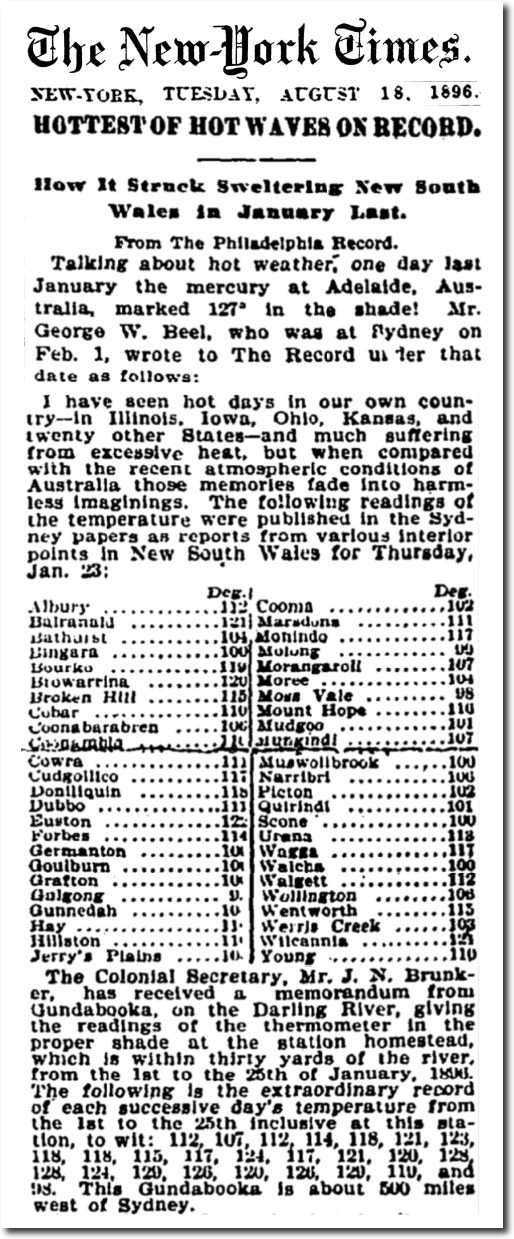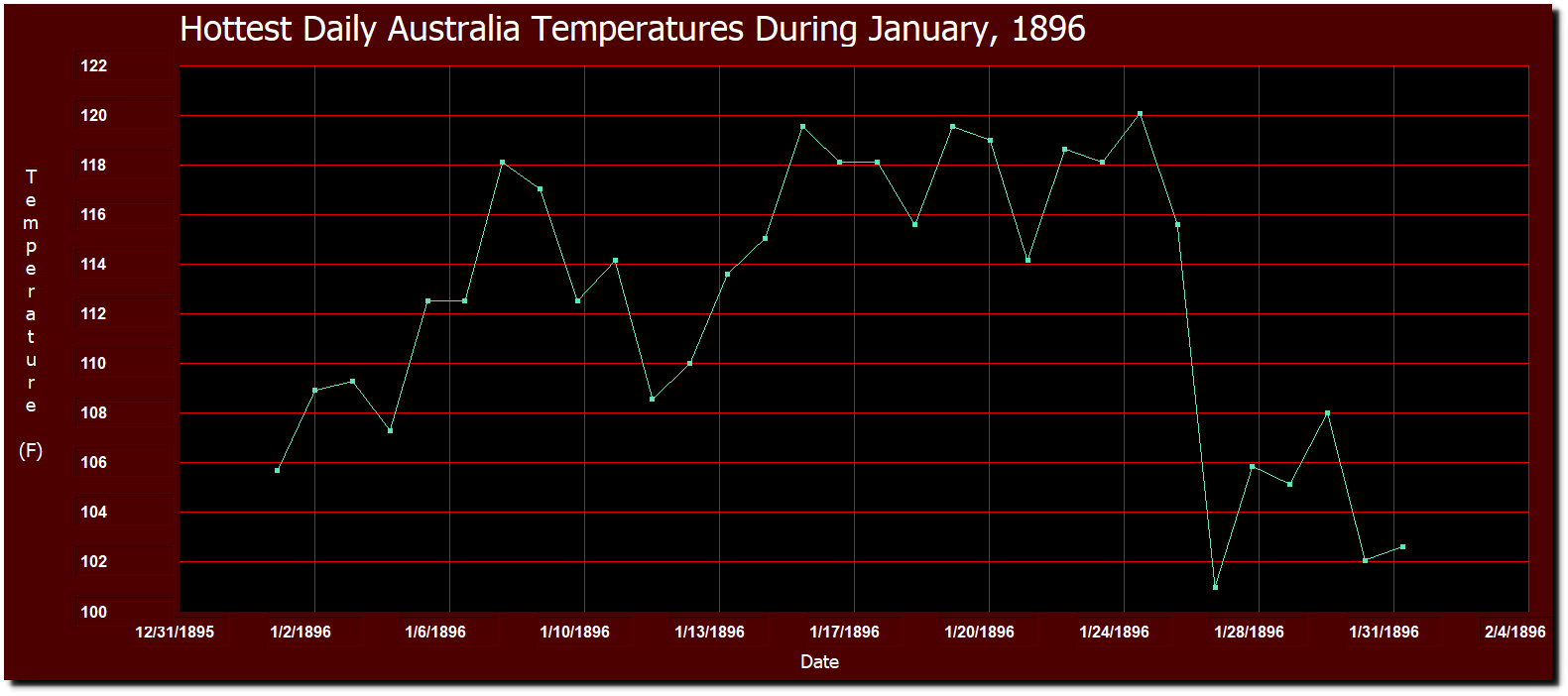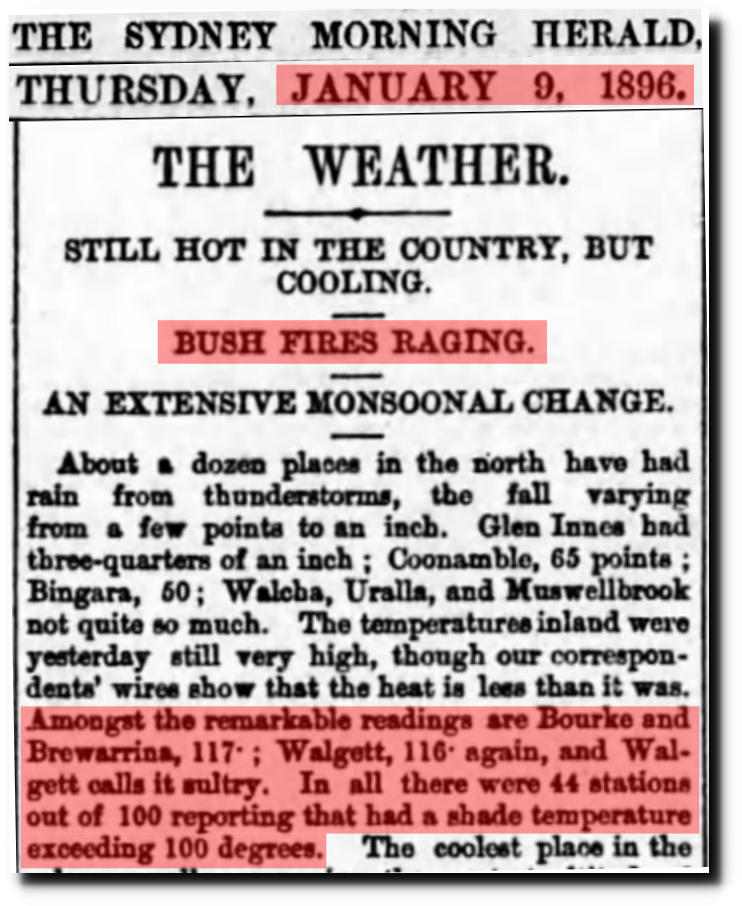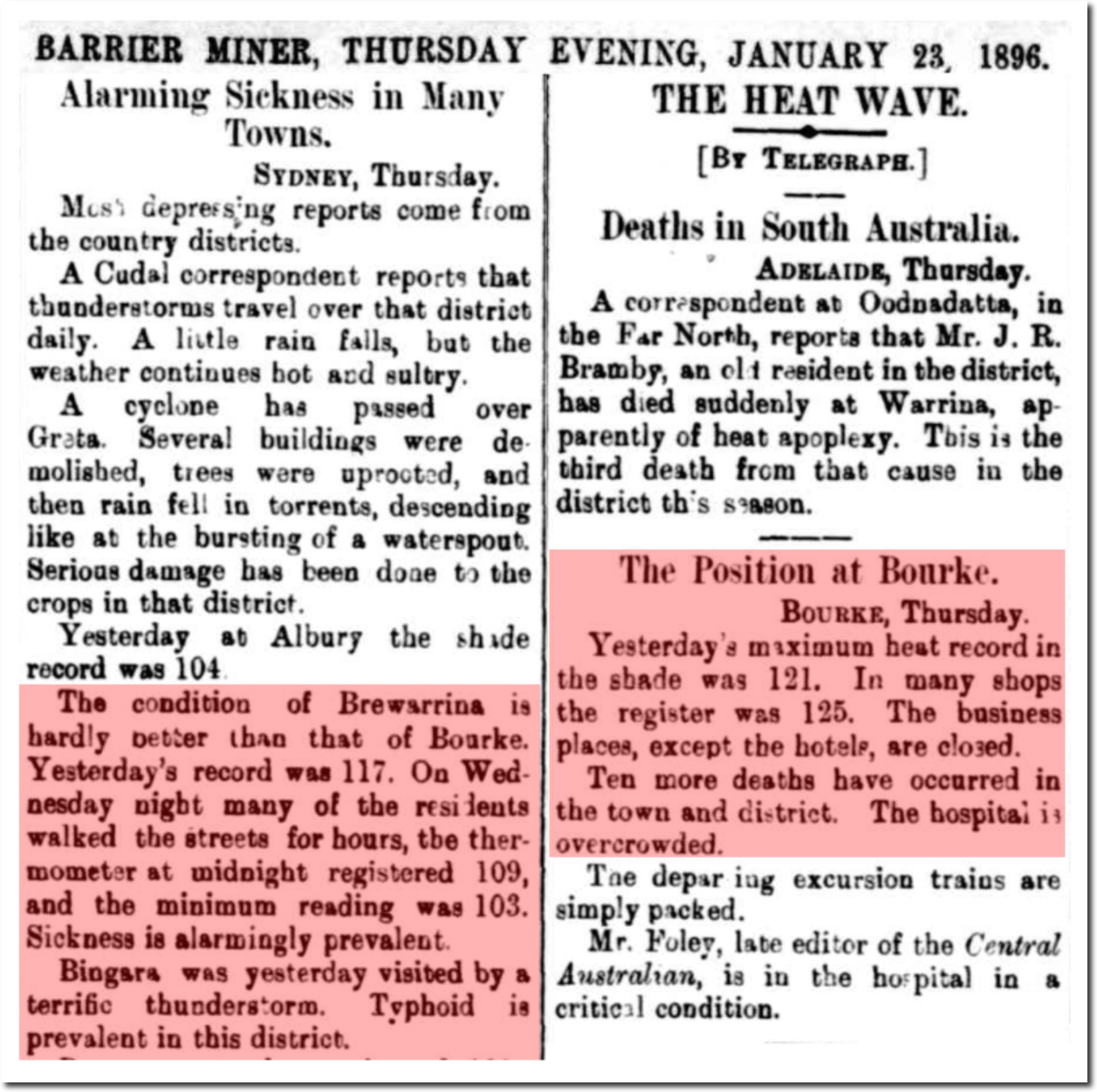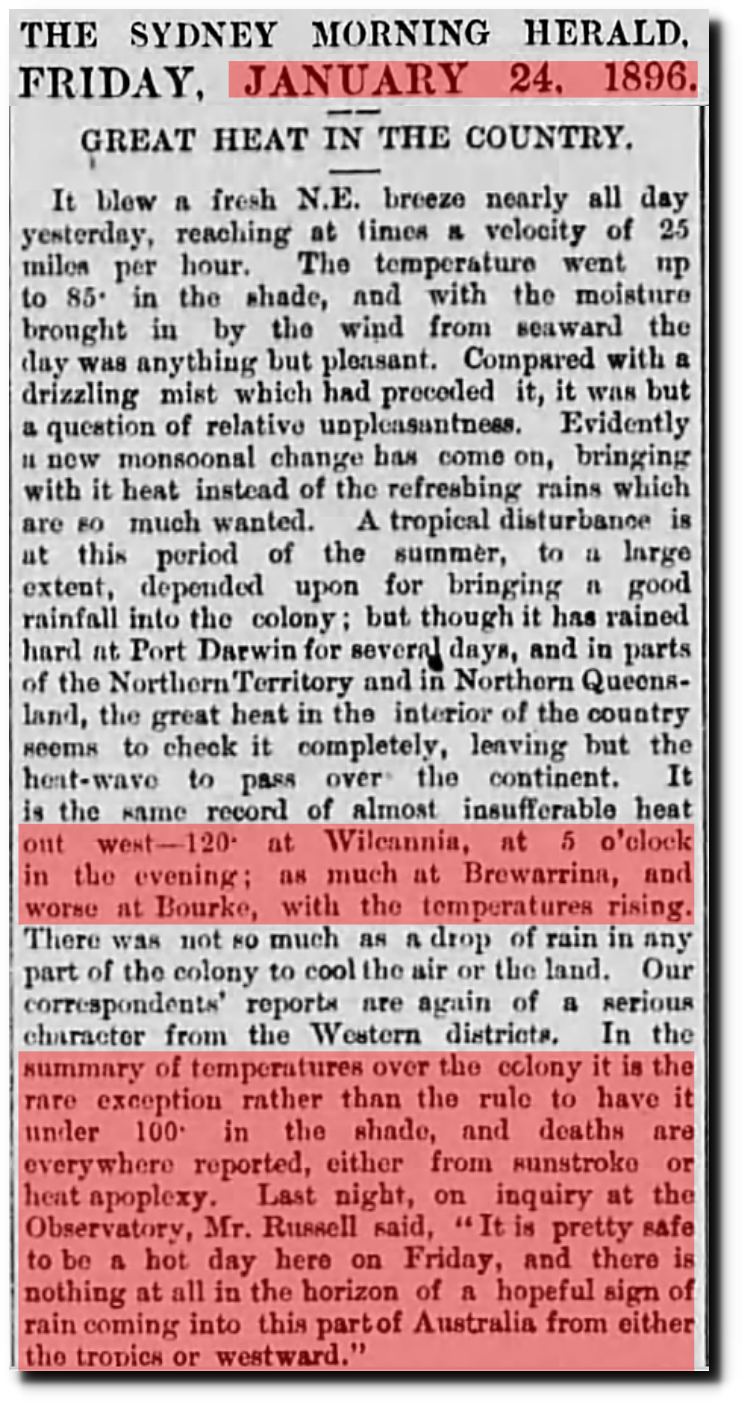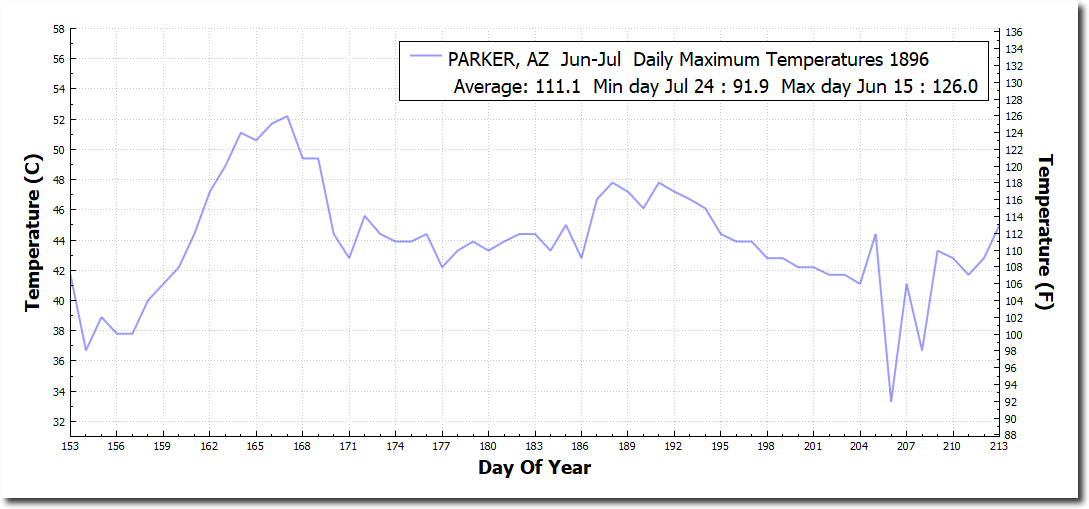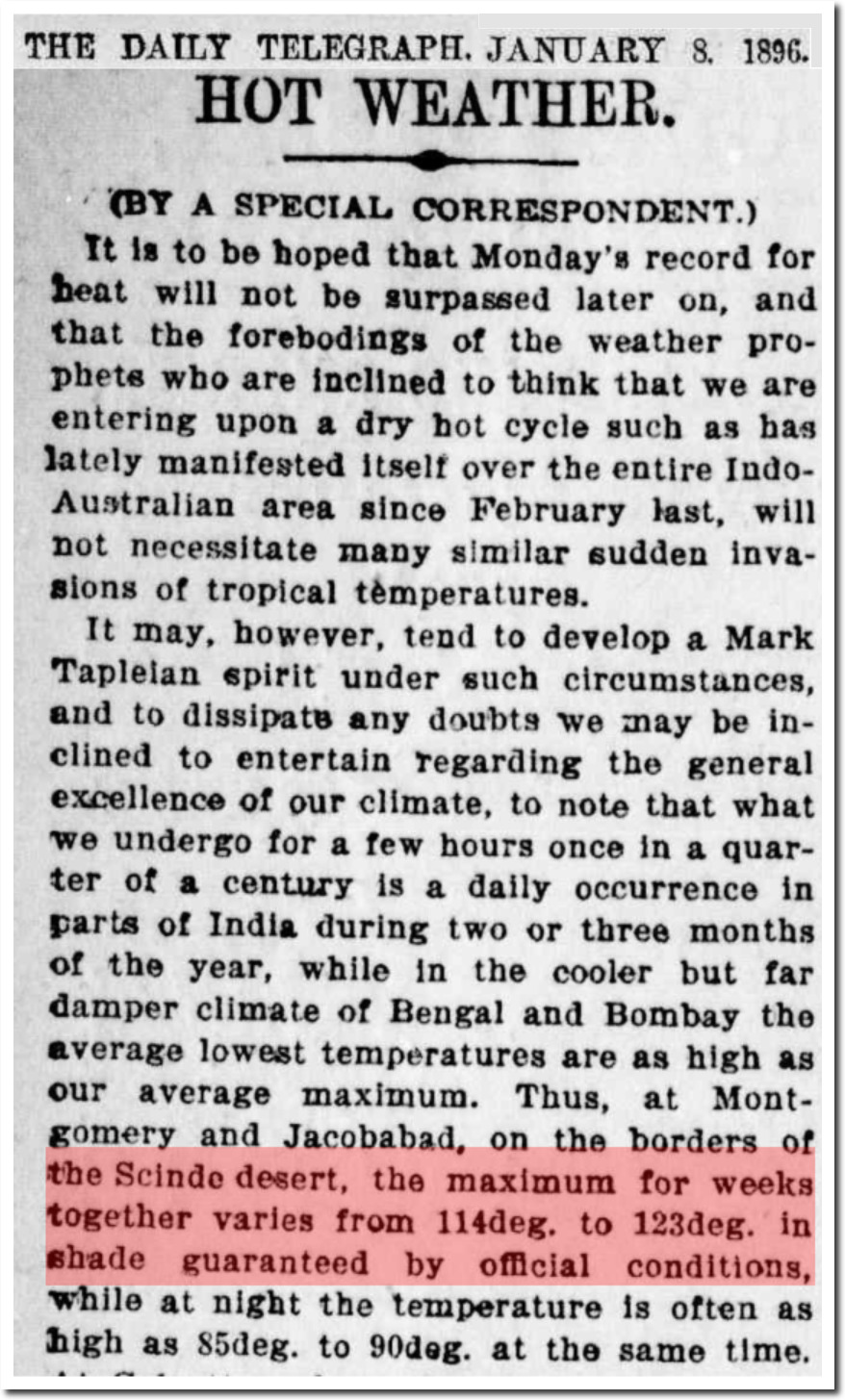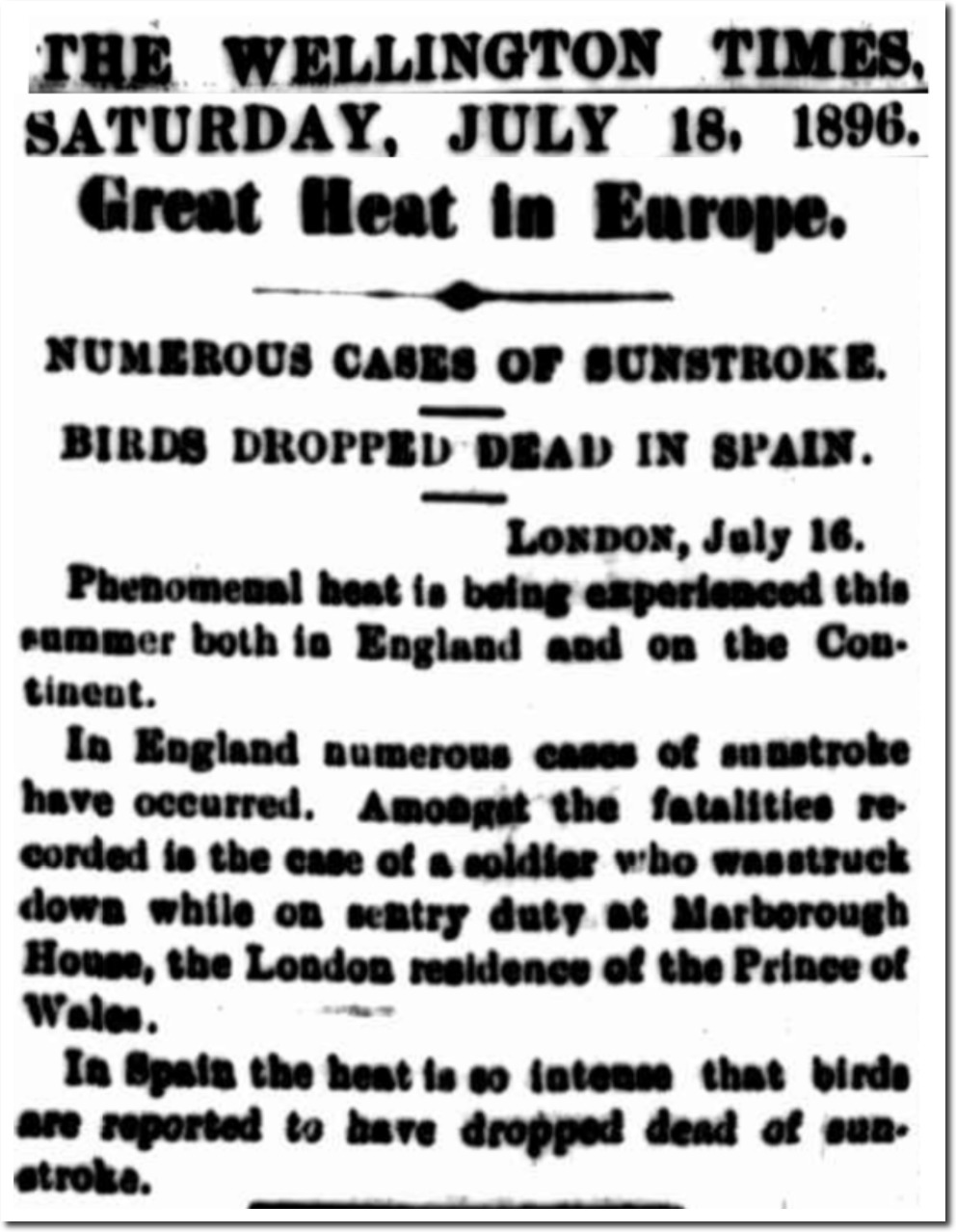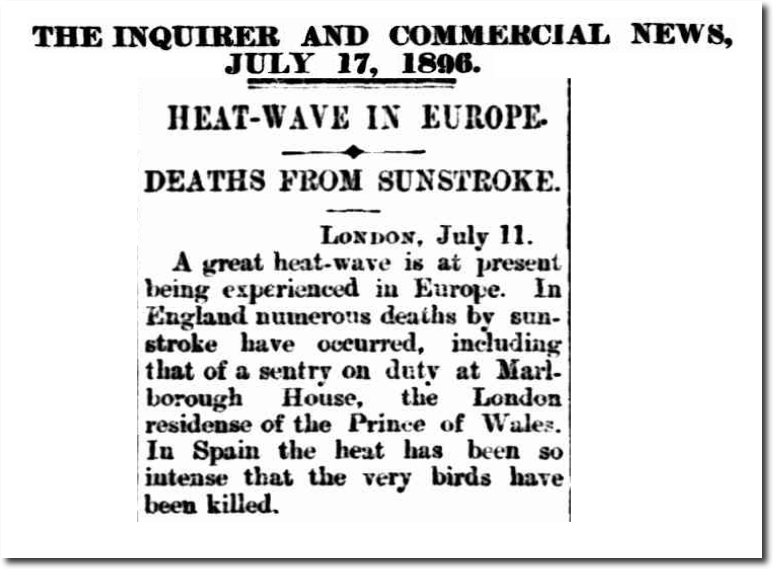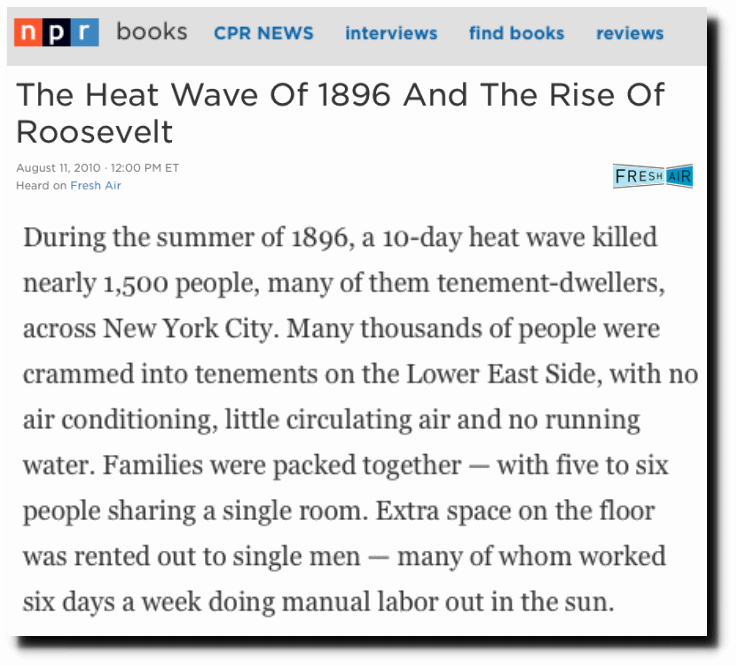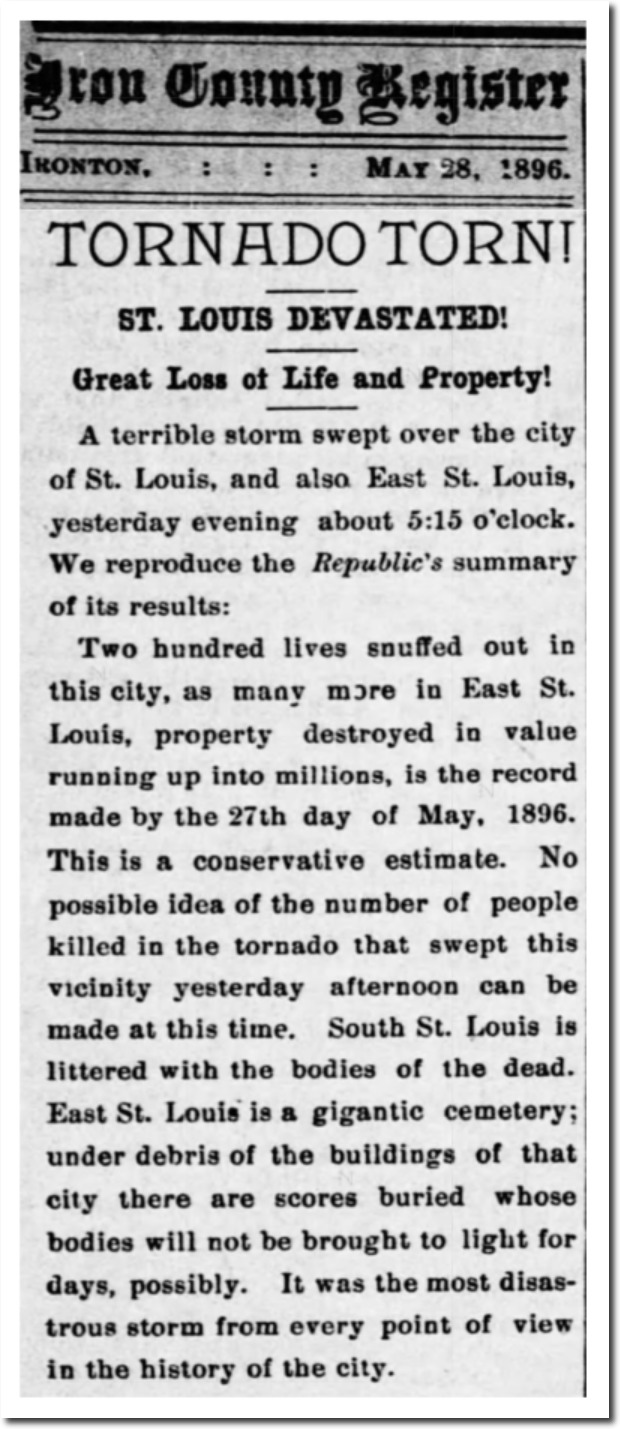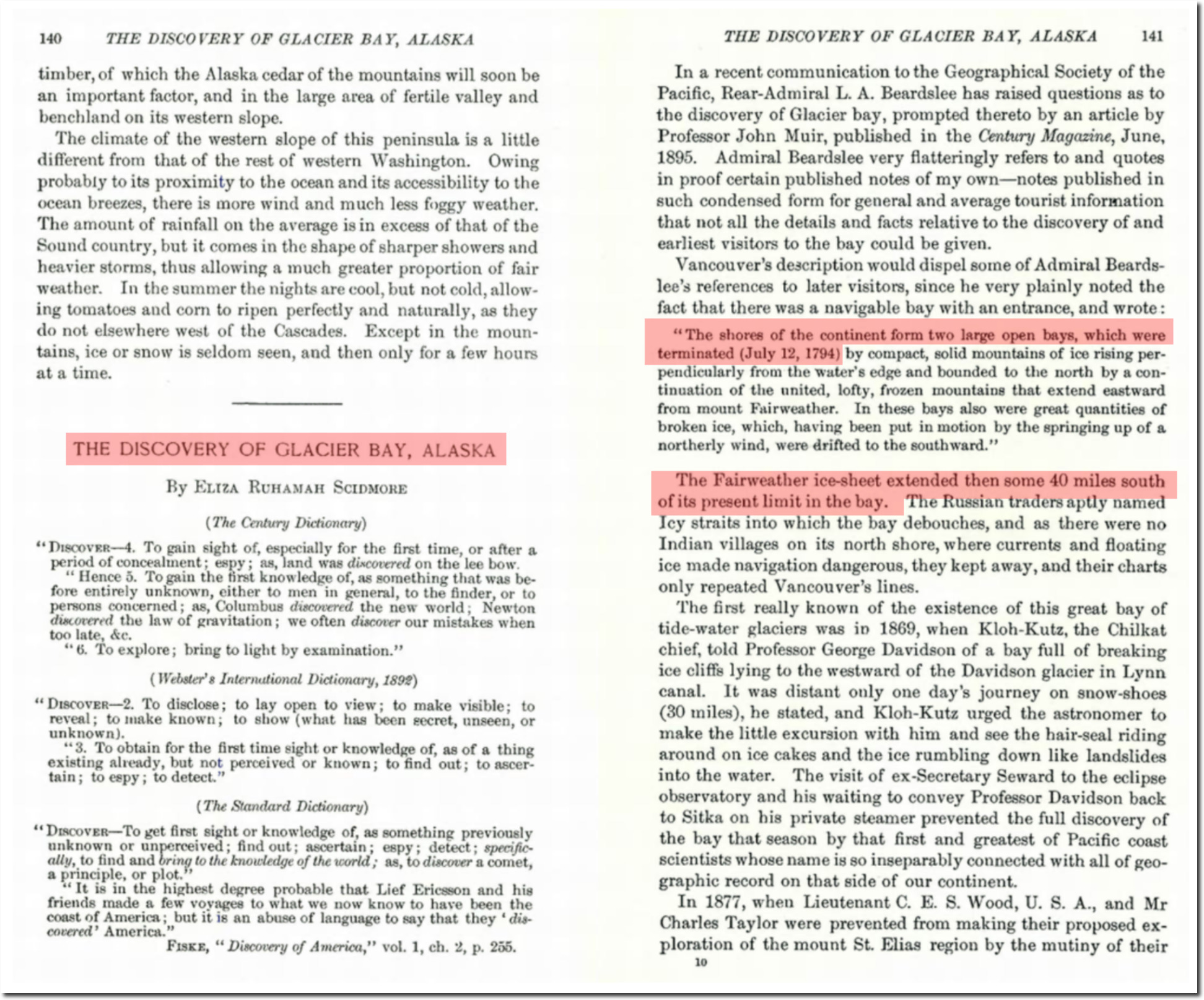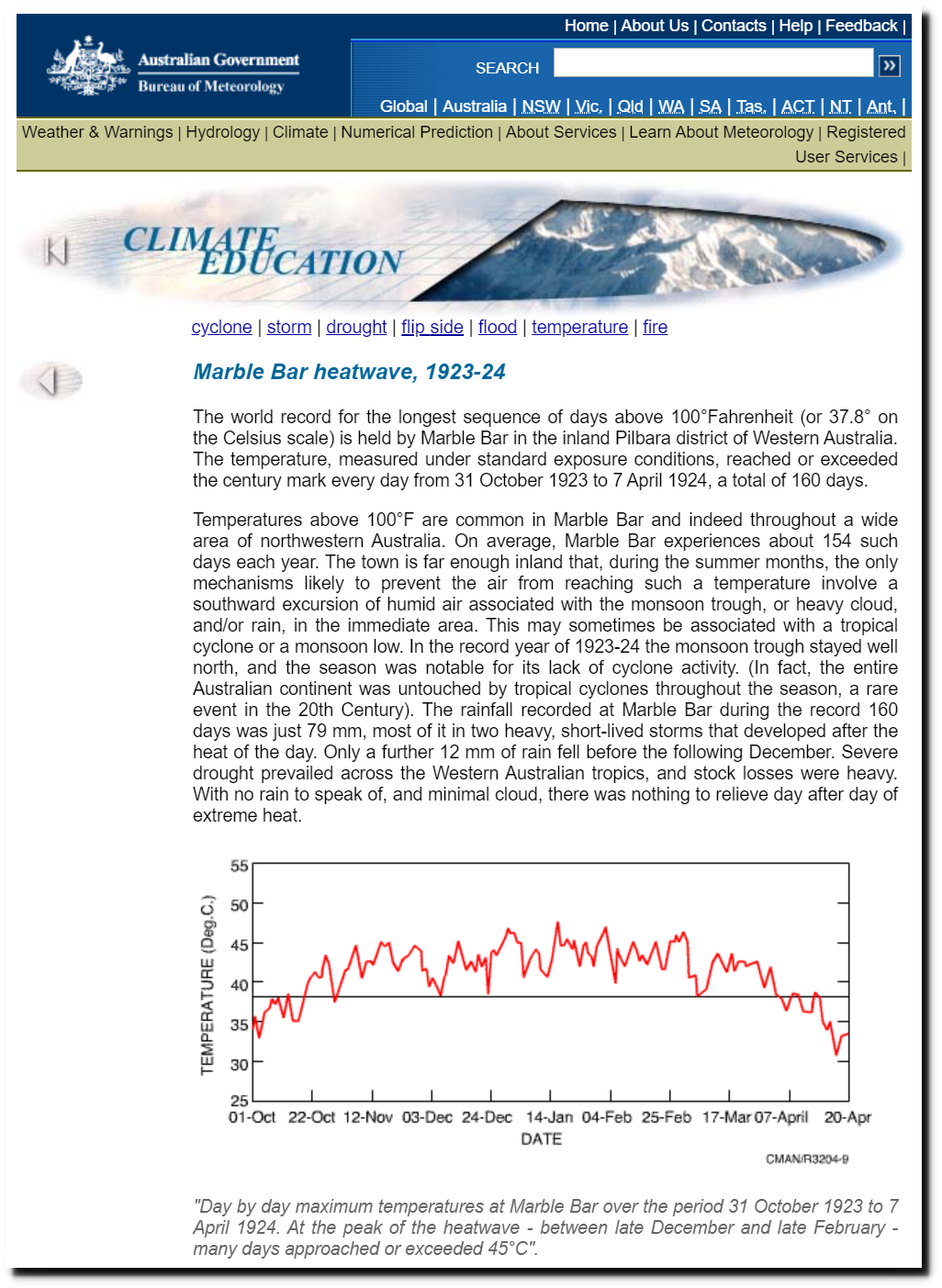Experts predict 50C temperatures in Australia, due to increased levels of CO2 in the atmosphere.
Australia reached 51C in 1906.
Not surprisingly, BOM hides all of the hot weather before 1910.
Climate change and variability: Tracker: Australian timeseries graphs
One of the hottest days on record in Australia was January 7, 1906.
08 Jan 1906 – THE HEAT WAVE – Trove
08 Jan 1906 – EXTENSIVE HEAT WAVE. – Trove
This was near the end of 15 years of the Federation drought.
03 Mar 1906 – The Capricornian. SATURDAY, MARCH 2, 1906. – Trove
30 Nov 1899 – DROUGHT IN QUEENSLAND. – Trove
There was also a tremendous drought in Europe at that time.
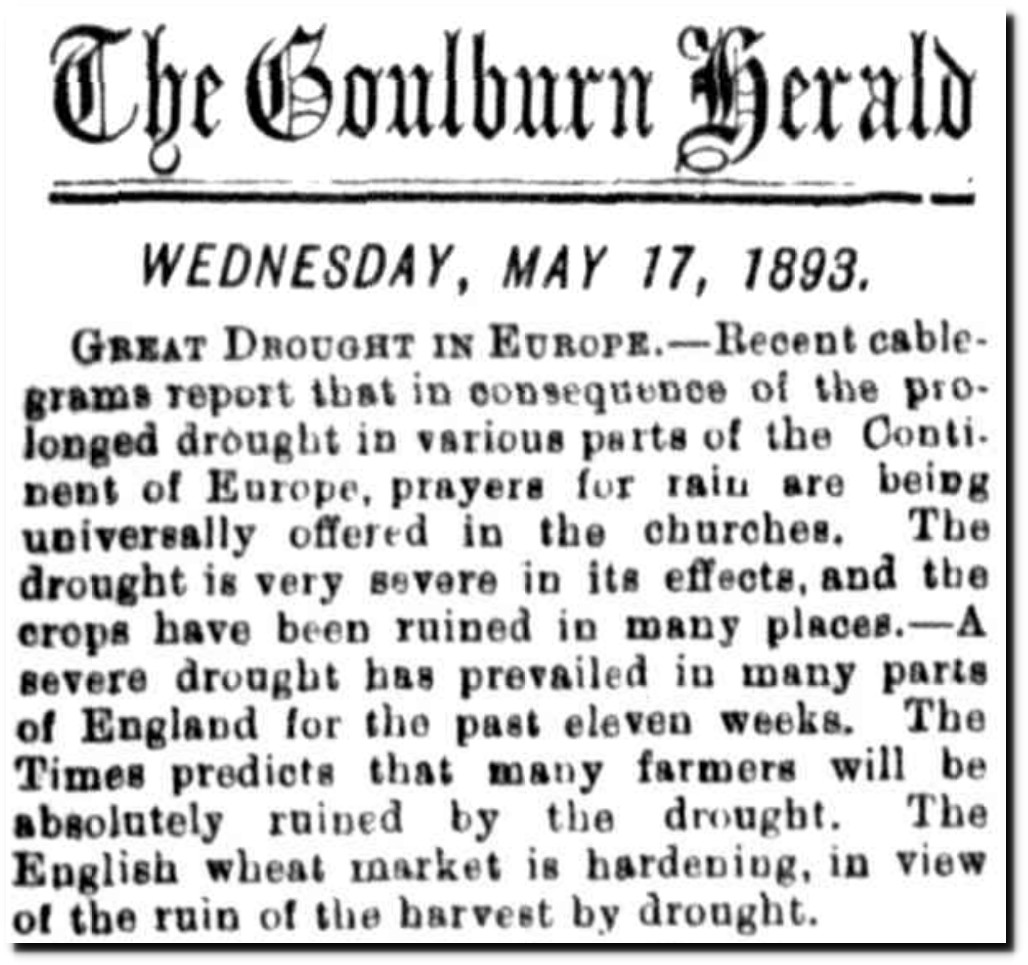 17 May 1893 – GREAT DROUGHT IN EUROPE. – Trove
17 May 1893 – GREAT DROUGHT IN EUROPE. – Trove
And in the US.
Spokane Falls Daily Chronicle – Google News Archive Search
Minnesota also had some of their worst fires that decade.
08 May 1890, 6 – Minneapolis Messenger at Newspapers.com
The New York Times described the the January, 1896 heatwave in Australia as the hottest of hot waves on record.
09 Jan 1896, Page 5 – The Sydney Morning Herald at Newspapers.com
23 Jan 1896 – THE HEAT WAVE. – Trove
24 Jan 1896, Page 5 – The Sydney Morning Herald at Newspapers.com
The year 1896 brought record heat all around the world, including Arizona’s longest spell over 120F.
India was 51C.
08 Jan 1896 – HOT WEATHER. – Trove
Europe
18 Jul 1896 – Great Heat in Europe. – Trove
17 Jul 1896 – HEAT-WAVE IN EUROPE.
New York
28 May 1896, 4 – Ironton County Register at Newspapers.com
National Geographic reported that Alaska’s largest glacier retreated 40 miles by 1896.
The National Geographic Archive | April 1896 | page 1
The Bureau of Meteorology used to have this web page describing the world’s record heatwave in 1923, and 50C temperatures in 1960 and 1998.
30 Mar 2009 – BOM – Australian Climate Extremes – Trove
They have since hidden this page.
Bureau of Meteorology – The page you requested was not found on this server
BOM’s excuse for hiding huge temperature anomalies before 1910, is that they claim the thermometers back then read about one degree too high.


